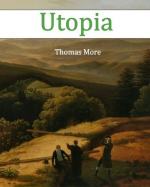|
This section contains 6,628 words (approx. 23 pages at 300 words per page) |

|
SOURCE: “‘The Laws of Justice, of Nature, and of Right’: Victorian Feminist Utopias,” in Feminism, Utopia, and Narrative, edited by Libby Falk Jones and Sarah Webster Goodwin, The University of Tennessee Press, 1990, pp. 50-68.
In the following essay, Albinski surveys the major themes and fictional modes of nineteenth-century British women's utopian fiction.
For the utopian idealist, fiction offers advantages that the essay form lacks: it reaches a potentially wider audience while peopling one's vision and bringing it to life.1 Description and dramatization can, however, be uneasy partners, and sometimes the fictional elements are overwhelmed by the very eagerness to depict utopia in all its perfection, or the utopia by the exigencies of a fantastic plot. To achieve a balance between the two requires careful integration of narrative form with social analysis and proposals for reform. All too often nineteenth-century writers tack on an irrelevant sentimental romance.
How innovative...
|
This section contains 6,628 words (approx. 23 pages at 300 words per page) |

|


